Decorative plaster is a beautiful and durable interior design, but its cost is quite high. We will tell how to make an analogue of the decor from putty.
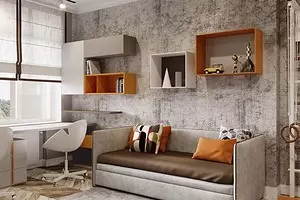
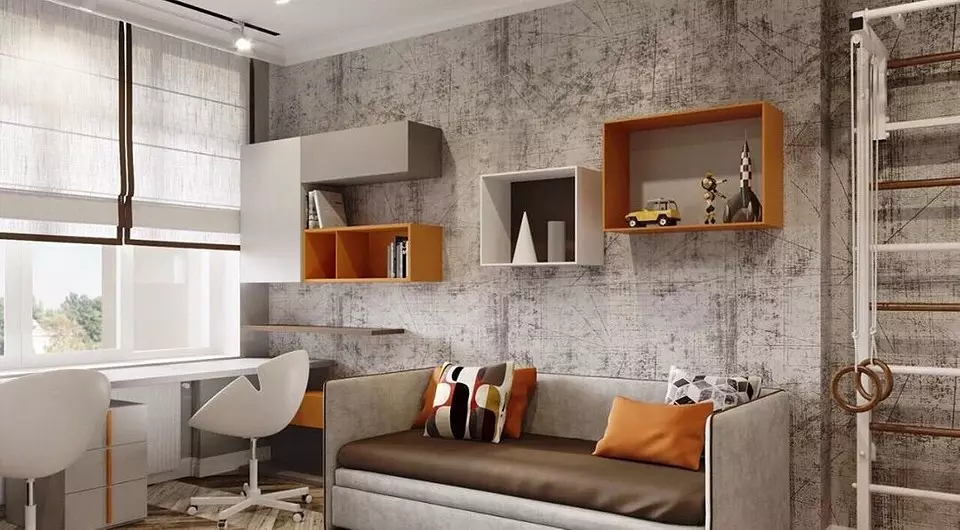
All about homemade decorative plastering paste
Features of decoration
We do the right
Relief Tools
- Rollers and stencils
- Homemade devices
Proven recipes
Finish design
New technologies open ample opportunities for wall design. Pronounced or, on the contrary, slightly noticeable textures, imitation of wood, fabrics or skin - all this is possible when using structural plaster materials. Their choice is very wide. A significant drawback is considered the high cost of such a decor. We will analyze how to make decorative plaster from the usual putty do it yourself.
Features of finishing material
Survived coverage is distinguished by strength, environmental friendliness, attractive type and long service life. It successfully simulates a variety of textures, maintainable, with time, if desired, can repaint. All this is due to the special composition, which includes three main elements.
- The binder is the main component. It may be cement, lime, gypsum, silicate glass, acrylic, silicone, etc. Determines the basic properties of the finished solution.
- Filler. Responsible for the texture and decorative characteristics of the composition. For mineral bases, various sand fractions and stone crumbs are used, fragments of shells, etc. For polymers, synthetic fillers and stone powder are used.
- Plasticizer. Various substances increasing viscosity, elasticity and adhesion finishing paste.
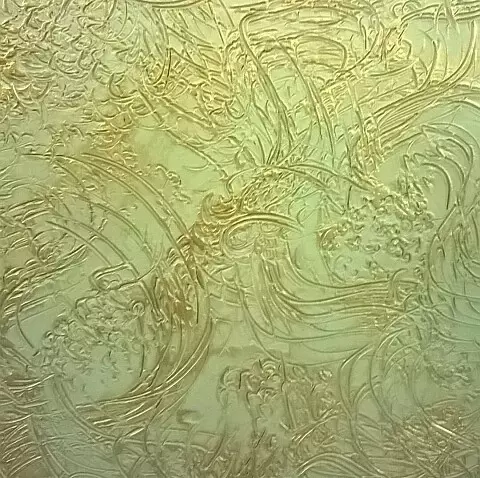
To impart the necessary shade to the composition of acrylic, silicate and silicone pastes, pigments are introduced. All the rest are painted after applying to the wall. Multicolor staining is especially good
There are several basic types of finishing plaster mixes.
- Textured. Contains special impurities that in the process of applying form the original relief.
- Venetian. Imitate the noble natural stone of different breeds.
- Flock. Contains flocks or multi-colored decorative flakes that are applied to a wet base. After drying, the layer of protective varnish is covered.
Putty under decorative plaster: how to make it right
To simulate an expensive coating, you can use any putty. It is produced on the basis of cement, acrylic, gypsum, etc. Most often choose the last option. It is only necessary to remember that gypsum surfaces are hygroscopic. They absorb water and destroy, so it is impossible to use such a decor in premises with high humidity. In addition to the varieties of the main component, the putty mixtures are separated into several types.
- Starting. Initially designed to align rather large base defects. Includes large dismissal supplements, which makes the hard material rough.
- Finish. Used for final alignment. The filler is finely dispersed, so hard coatings are perfectly smooth. Have less strength than starting.
- Universal. Combine the properties of both varieties.
To make decorative plaster from a conventional putty, more often use the finishing paste, especially if it is planned to perform an analogue of venetian.
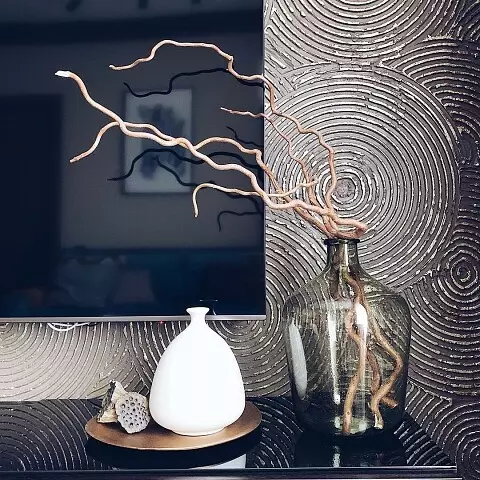
For textured species, you can choose a universal or even starting mixture. A variety of relief is achieved not only due to the difference in the composition, but also due to the method of applying.
Venetian and its variety Versailles plaster are superimposed on the perfectly aligned basis. For them, the finishing material is used, which is stacked by a layer of not more than 3 mm. Then a pattern or spatula with chaotic smears is applied. After drying, the plane first inspired by the spatula, then heats up. So that it turned out relief, but at the same time a fairly smooth coating.
Textual decors are simulated in other ways. To get a coating type "Coroed" in the composition of coarse sand or stone crumb in the proportion of 1: 4. The solution is applied to the wall and give it to dry, after which they smooth the grater. The tool shifts the filler from the place, so that the relief is formed.
The structure can be obtained using special tools and fixtures. It is quite simple. The spacing mixture is superimposed on the base, after which a flat figure is applied to a flat surface. This can be done with a roller, any device or ordinary stencil. We will deal with what is used for this.
Instrument Tools
The appearance of the coating depends on how the drawing was applied to it. For such work, choose one of the tools below.Rollers and stencils
The easiest way to work with roller. It rolled on the ground, leaving a trace in the form of a pattern or small pattern, which form the cover of the coating. The tool is installed in the top of the wall and smoothly lowers down. The pressure must be minimal, otherwise the quality of the output will suffer. It depends on the material from which the device is manufactured:
- Rubber. A relatively soft basis, which gives a clear indent or embossed impression. Minus - sticking the mixture to the tool.
- Wood. Analogue of rubber with the difference that the solution does not stick to the working surface. But he dries quickly on it, so regular cleaning is required.
- Leather. Used to simulate natural stone texture when working with venetian.
- Plastic. Experts do not recommend it, since the plastic cracks and leaves flawed on the plaster.
- Pile fabric. The sizes of the pile determines the resulting relief. Before buying, it is recommended to test how firmly the villi is held at the base. If they are easily falling out, it is worth looking for another fixture.
The stencil is a sheet of a dense material on which the drawing is cut. Fastened on the wall, after which a solution is applied to the holes. The convex additional layer is obtained.
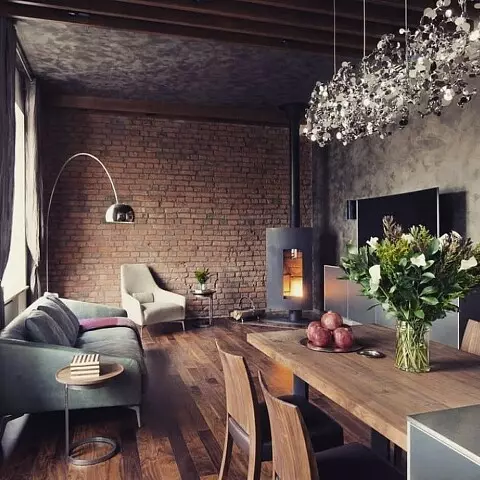
With the help of a stencil, you can not only imitate brickwork, for example, but also to create volumetric panels with your own hands. Especially good in this performance looks geometric ornaments and vegetable patterns.
Homemade devices
To apply a drawing to a coating, a variety of faded materials are used.
- Thorough sponge. It is wetted by a wet solution, getting an interesting texture.
- Hairbrush. With the help of wave-like or direct movements achieve the original effect.
- Plastic film. The wet wall is completely covered with a film, especially its smyster for the appearance of folds and irregularities. After drying, the plane is removed, the base is grinning. So the decor imitating silk is obtained.
Improve and ready-made tools. For example, a smooth roller is wrapped with a medical harness, a rope with nodes or a cloth.
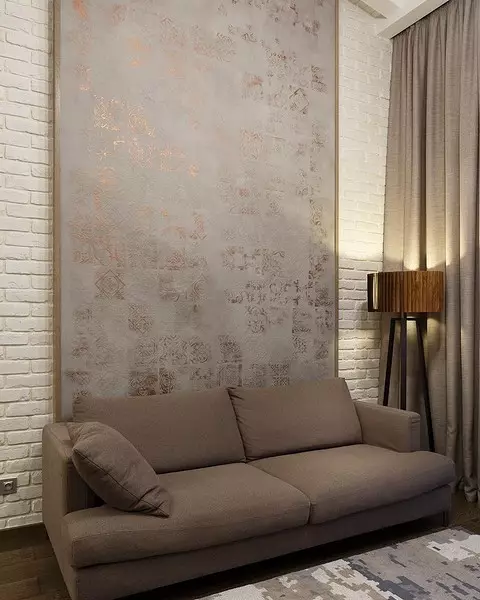
So you can get the unusual texture of the decorated surface. For the same purposes, brushes with different pile long, brushes of various widths, mint newspaper or fabric, plastic film and much more
Decorative plaster from ordinary putty: Verified recipes
Pick up the composition for subsequent application of the relief is quite simple. We will analyze how to make a mixture of "under the roller", stencil and any other fixture.
- We take plaster or chalk powder (it is calcium carbonate) as the basis. It will take 6500 g.
- PVA glue as a binder. It will be needed 800 g.
- CMC glue solution 5%. Divorced in water strictly according to the manufacturer's instructions. Need 2000
- Large house 72% soap as a plasticizer. Three of it on a grater, we divorce in a small amount of water to the gel condition.
The process of kneading is very simple. First we prepare the liquid. In it, in small portions, we introduce the powder and prevent well. Use the construction mixer optimally. We give a ready-made paste to stand a little and mix intensively again. The peculiarity of this variety is a long drying time. We offer to watch the video where the process of texturing the self-made material is shown.
There is an even simpler recipe for which any gypsum putty with additives will be required. In order to increase its strength, PVA glue. It is added to the water for the knead, after which the mixture is introduced into the fluid. The proportions are followed in accordance with the manufacturer's recommendations. The finished solution can be applied by any like method to obtain a relief surface.
To obtain plaster type of coroede, it is possible to recommend this variant of the mixture:
- Large sand, sinking and washed - 3 parts;
- Gypsum fine-dispersive composition with mineral additives like "SANGIPS" - 3 parts;
- A mixture of plaster with polymer additives like "fuegenfuller" - 1 part.
All components are mixed in dry form to a homogeneous mass, which is indulging in water and smelled well.
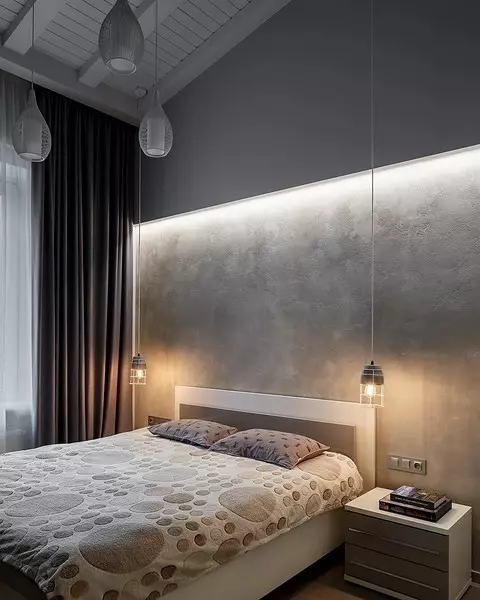
A properly prepared and applied homemade decorative mixture from a spike material is little less inferior to an industrial analogue. It is important to select its components, taking into account the destination.
Finish finish
After finally hardening the pasta, it is recommended to paint, which will benefit the texture of the finish. There are many methods of staining, we will analyze only a few. The easiest of them below.
- We clean the surface fine-grained emery if necessary.
- We take a long-tailed roller and impose the first, darker, layer of paint.
- We dry the surface.
- Take a short-track tool to paint the decor with a lighter tone.
For the invoice, where the decorative elements are asses in the surface, the smelting method is well suited. To do this, first applies the basic light layer of paint. The dark tone is superimposed on top of it. After a short period of time when the dye has already grabbed, but not a dry, the wet cloth is removed.
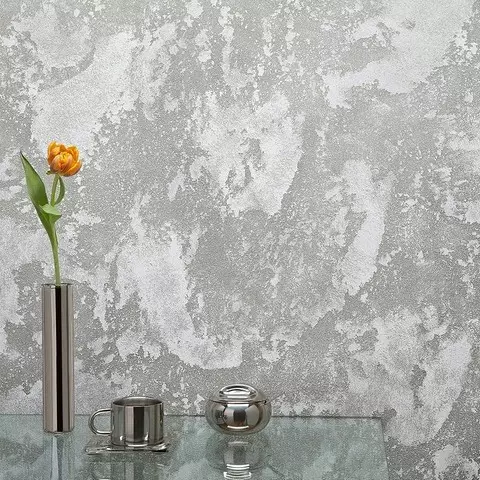
It looks good for the result of the so-called dry painting. The method of dry brush is best working on convex textures. As in the previous version, basic staining is first performed.
After that, the paint is recruited on the brush, so that the bristles are almost dry. After that, with light chaotic smears apply a dye on the base.
We dismantled how to make decorative plaster with a putty. No money will be required, no excessive efforts. Everything is simple enough. A wide space for creativity opens in front of the homemade master, because at will you can create a relief surface, imitation of a natural stone or even a panel in the form of a bas-relief.



